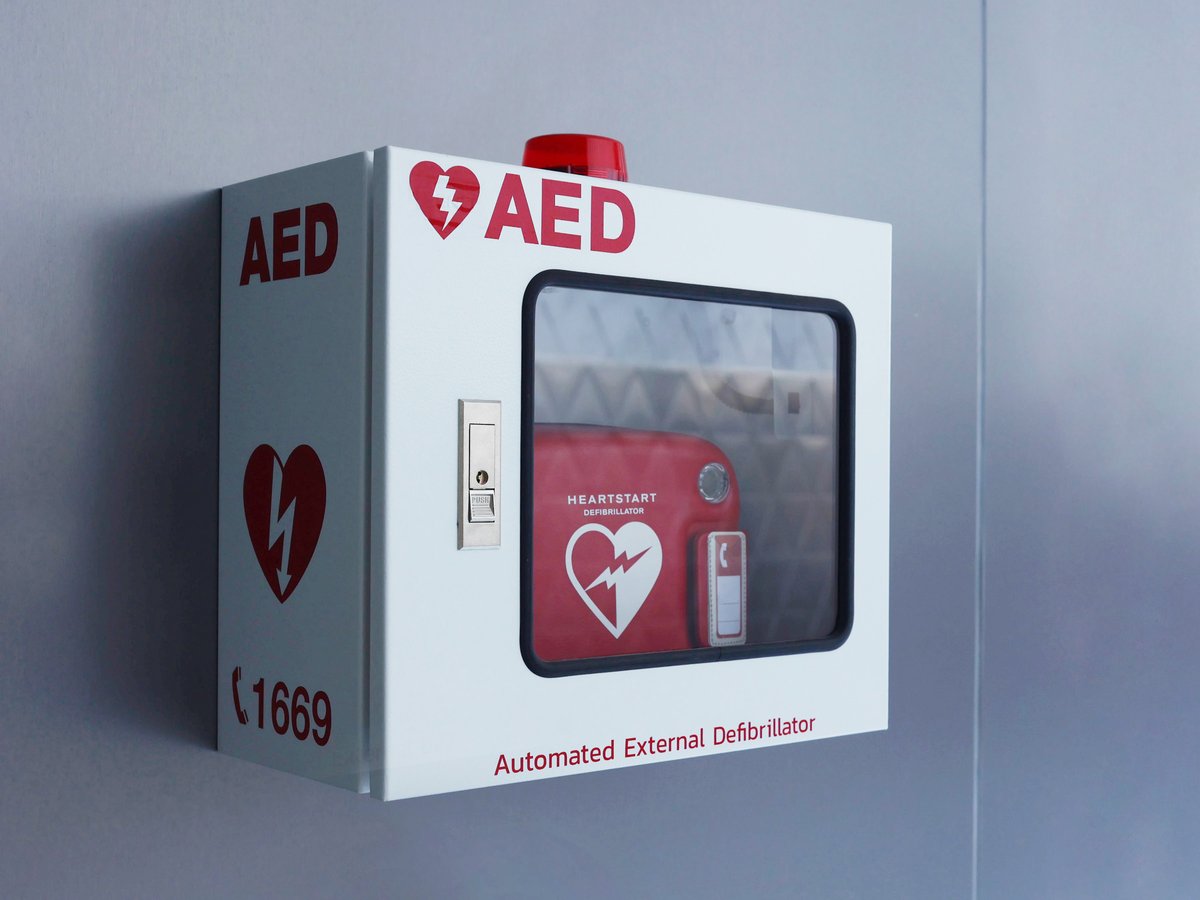
Understand Key Automated External Defibrillator (AED) Selection Features, Costs, and Maintenance
NFL football is an American pastime, but fun turned to fear last week as Buffalo Bills safety Damar Hamlin, age 24, collapsed on the field. Cardiac arrest is particularly uncommon for healthy young people. However, athletes may be at greater risk than others when actively competing in sports.
Hamlin is not alone. Every year, about 356,000 people in the US experience cardiac arrest outside of a hospital setting—that’s nearly 1,000 people per day. Sadly, an estimated 90% of these events are fatal.
Despite representing nearly 10% of deaths in the US each year, cardiac arrest is poorly understood by the general public. Unlike a heart attack, in which an artery that provides blood to heart tissue is blocked, cardiac arrest is an electrical issue, and the heart can no longer contract in a coordinated manner. As a result, blood cannot be pumped throughout the body, and heart and brain tissue can begin to die off from a loss of oxygen.
When sudden cardiac arrest occurs, it’s essential to provide prompt, high-quality CPR to help maintain blood flow and rapid defibrillation to help reset the heart’s electrical signals.
Hamlin’s unfortunate event underscores the need for medical and public facilities to be prepared for these cardiac events with an automated external defibrillator (AED).
What is an AED?
An AED is a type of defibrillator that’s designed to be used easily by bystanders before emergency medical services arrive. AEDs deliver a high energy shock to the patient’s heart, which then allows the heart’s normal rhythm to resume. They can be found in various public locations, such as sports facilities, schools, office buildings, and shopping malls, as well as many medical facilities like nursing homes and physician offices. Even for hospitals, AEDs can be a valuable supplement to manual monitor/defibrillators used by the code team.
AEDs can help to reduce the time to shock, and therefore increase the likelihood of successful resuscitation with good outcomes. Unfortunately, a 2018 study found that AEDs were used in only 10.8% of public cardiac arrest events before emergency medical services arrive.
AED ratings
If you are a risk manager, supply chain manager, EMT, nursing home staff member, sports manager, first responder, or other healthcare professional looking to purchase AEDs, ECRI’s recent guidance and evaluations can help. ECRI has evaluated AEDs designed and marketed for two specific use scenarios:
- Medical professionals and frequent users, including nurses, physicians, and emergency medical technicians (EMTs). These units may have more advanced medical capabilities, like the presence of a manual defibrillation mode.
- Nonmedical targeted responders, such as police officers and identified volunteers. These units provide more guidance and are easier to use.
Ratings of AEDs for medical professionals and targeted responders, along with information about our test protocol, discussion of key AED specs, and data illustrating hospital interest in specific AED models are available through ECRI's Device Evaluation program.
ECRI also provides guidance on the placement of AEDs. A good rule-of-thumb is to have a defibrillator available within two minutes of patient collapse, or within two minutes of when the patient was found.
AED costs
ECRI’s analysis found that the primary contributing factor to the cost of an AED is the frequency of use. The average eight-year cost of ownership for AEDs for medical professionals and frequent users is $10,000. Nearly 80% of this cost is due to replacement defibrillation electrodes and batteries.
For targeted responder applications, the average estimated eight-year total cost of ownership is $3,300. In this case, use frequency is expected to be much lower, and replacement electrodes and batteries represent only about 40% of the total cost.
Conduct an AED check-up
As essential life-saving devices, AEDs need to be ready-to-use and easy-to-find at all times. Rapid defibrillation increases the likelihood of successful resuscitation with good outcomes. To help ensure that your AEDs are ready to help save lives:
- Make sure that any AEDs in your facility are on the list of FDA approved devices. FDA requirements have changed since 2015, and not all models have gone through the new process. Check whether your model is on the approved list here: Automated External Defibrillators (AEDs) | FDA
- Check AED readiness regularly, in accordance with manufacturer recommendations. Look for a status or readiness indicator and inspect for signs of damage. Do this at least once per month.
- Consider new models with features like remote monitoring when it is time to replace your AEDs. These capabilities can transmit self-test results to a central location. They can even help you stay on top of battery health and electrode expiration dates.
Want to learn more? Get access to ECRI’s free webcast recording: Selecting an Automated External Defibrillator: What You Need to Know.
